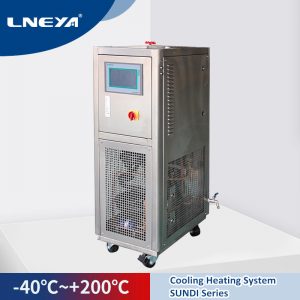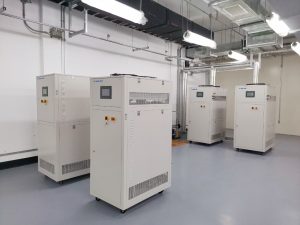Test of working temperature of electric vehicle power battery
The normal working temperature
range of power batteries for electric vehicles is -30 ~ 52 ° C, and the working
temperature range is -46 ~ 66 ° C, which is difficult to achieve with existing
power batteries. Although local warming measures can be used for battery packs,
they increase costs. Each type of battery has an optimum operating temperature
range, beyond which battery performance will be reduced or impaired. Therefore,
before the production of power batteries, manufacturers need to perform related
temperature tests or inspection agencies to perform similar tests.
The cooling and heating
system components of electric vehicles must be tested at different pressure
levels and temperatures. The performance and power consumption of these systems
must be tested to ensure that they do not significantly reduce the mileage of
the vehicle. In a typical test, a complete auxiliary heater or component, such
as a valve, hose, and other hollow valve, is inserted into a test slot on a
pressure cycle table.
A cooling circuit is
usually tested in a temperature range of minus 40 to 20 degrees, while a
heating circuit is tested in a temperature range of 20 to 140 degrees. Power
consumption and performance are usually tested at alternating temperatures.
Low-voltage or high-voltage power sources can be selected, and operation can be
simulated with on-board batteries and generators or traction accumulators. In
many electric vehicles today, heating and cooling systems can drain the
battery, negatively affecting the mileage of the car. By comparing the test
results before and after the load test on the pressure cycle test bench, we can
see how the change in battery power consumption and performance affects the
service life of the vehicle.
A comprehensive
long-term test usually takes 20 to 30 days, depending on how often the load
changes. The temperature and volume flow of the test medium and the ambient
temperature (if the test takes place in a climatic chamber) vary according to
the test specifications. The temperature and flow rate, pressure, and pressure
drop of the inlet and outlet of the test object circuit are continuously
measured. The test here focuses on the thermal and electrical performance of
the heating and cooling device under different environmental conditions.
Lneya’s new energy battery cooling
and heating system KRY series is widely used in production lines or testing
departments of related companies in China. The temperature control precision is
high, and the single fluid medium temperature control saves resources and
costs.
(The relevant information comes from the
Internet. If you have any questions, please contact the editorial department.)
Related recommendations
-
Shutdown method in the case of high-precision high-low temperature circulator failure
1151The high-precision high-low temperature circulator is one of the equipments used in the pharmaceutical and chemical industry to support various reactors. If users encounter an abnormal power outage during use, they should pay attention to operatio...
View details -
What determines the price of a brand’s refrigeration and heating circulator?
1059The price of the brand's refrigeration and heating circulator is mainly determined by the three major parts of raw materials, manufacturing costs, and technical costs, which affect the subsequent quotation. The composition of the refrigeration he...
View details -
Explosion-proof hot and cold machine winter maintenance instructions
1276When the explosion-proof type hot and cold integrated machine is used at the end of the day or when it is not used by the standby, be sure to disconnect the cooling water connection pipe, clean the remaining cooling water in the pipe, and store it...
View details -
2018 Automotive Testing Expo
10312018 Automotive Testing Expo (2018 Automotive Testing and Quality Control Expo) is China's relatively large vehicle and component testing and verification technology and service exhibition. Wuxi Guanya LNEYA is committed to developing battery te...
View details
 LNEYA Industrial Chillers Manufacturer Supplier
LNEYA Industrial Chillers Manufacturer Supplier













